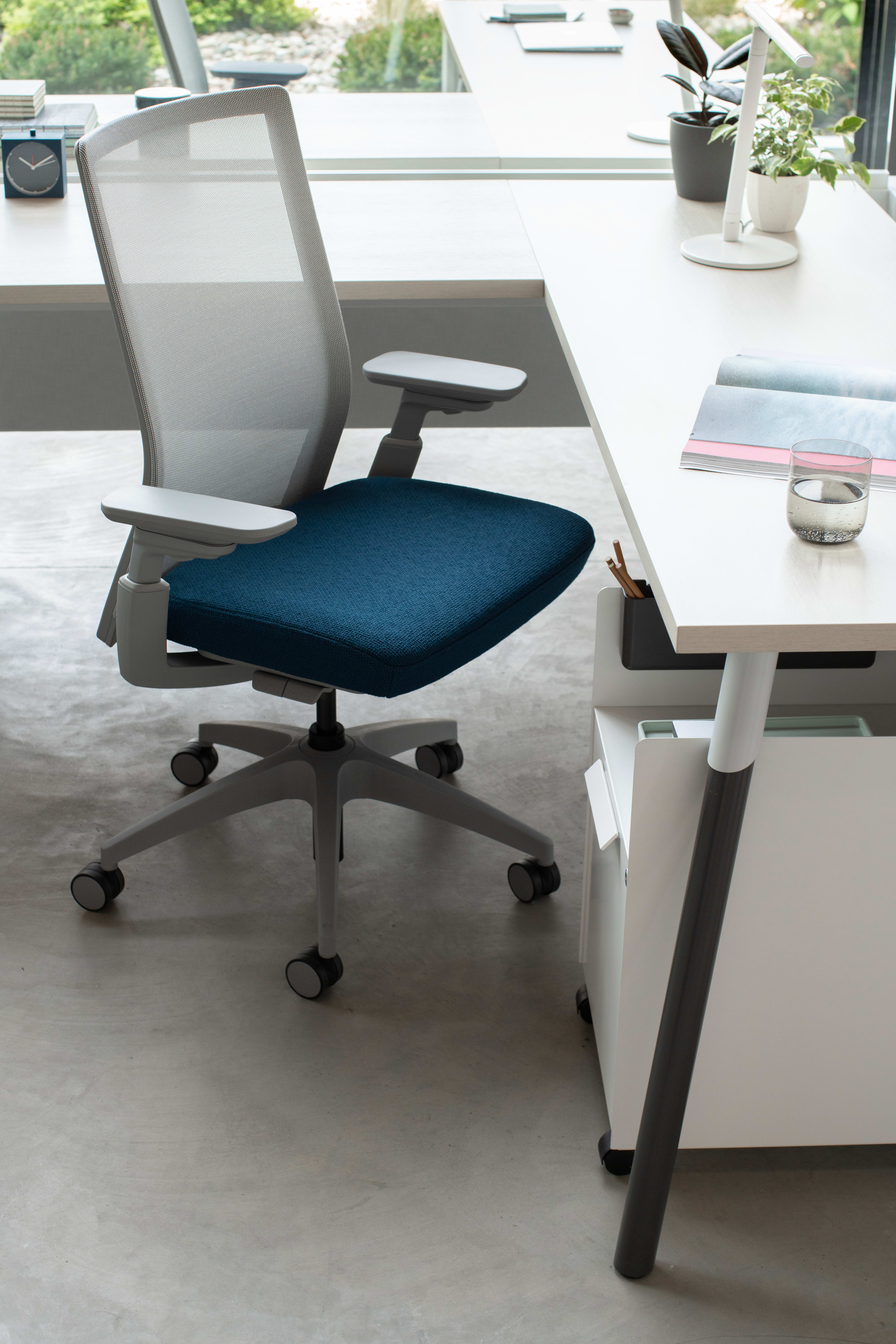Download the PDF Copy
Download
The higher education industry is facing a great resignation brought on by changing needs and requirements, as well as pent-up frustration related to historic experiences. According to a recent survey from the College and University Professional Association for Human Resources, 57% of college employees (faculty and staff) reported they are likely to leave their jobs in the coming year (Bichsel et al., 2022). To curb this movement, higher education institutions need to prioritize talent management. This means:
- • Prioritizing the success and overall wellness of faculty and staff at a level that hasn’t been acknowledged historically.
- • Prioritizing spaces for faculty and staff that feel intentional, meaningful, and support the work that’s being done.
The needs surrounding office space in higher education institutions have been changing dramatically over the last few decades and with collaborative work increasing, the allocation of space is a high-priority issue. Colleges and universities need to reconsider their floorplates to combat the resignations brought on by changing needs and requirements, as well as pent-up frustration. Open office concepts are best suited for collaborative work, yet a completely open office across all departments is not feasible for higher education. Private one-on-one spaces for students and professors, as well as quiet areas for faculty research and writing, are necessary. Administrative support, however, is a department in higher education that can benefit from an open layout.
Benefits
There are three primary benefits to colleges and universities that shift their administrative teams to open office floor plans:
- Space utilization improves by reducing total space per employee.
- Collaboration between employees is enhanced.
- Communication is enriched.
Goals
There are seven goals for colleges and universities considering open office layouts to strive for:
- The best use of space:Institutions recognize that spaces at the center of campus are their most valuable. By moving departments that have little to no contact with students – including HR, advancement, purchasing, and facilities – to periphery or off-campus spaces, the most valuable buildings in the center of campus can be freed up to create space for classrooms, student services, research labs, study areas, and quiet areas for faculty.
- Responding to new work patterns:Traditionally, academic workspaces have been filled with work surfaces for individual work. However, collaborative work is becoming increasingly popular and independent work is becoming more flexible due to technological advancements. With these changing work patterns, colleges and universities can reevaluate how their spaces are designed and utilized.
- Increasing campus space utilization:Most assigned offices are occupied less than half of the time during the day. When space is underutilized, colleges and universities must reconsider the quality of their space.
- Increasing financial feasibility:Space is expensive to build, operate, and change. Understanding how much a space costs versus how often it is used helps institutions see where cost-effective solutions can come into play.
- Achieving environmental stability:Beyond being well-utilized and financially feasible, institutions are seeing how much of an impact they have on the environment. By reevaluating space utilization, colleges and universities can make choices that will help minimize their environmental impact.
- Promoting student and faculty interaction: It is important to increase student-faculty interactions while prioritizing the overall wellness of faculty and staff. When evaluating space, higher education institutions should consider floorplates that promote student-faculty interactions, making it easier for students to access faculty, without compromising the overall wellness of faculty and staff.
- Enabling concentration at work:Colleges and universities provide individual office spaces to allow faculty a quiet space to do heads-down work, while insisting on an open-door policy to encourage student interactions. As a result of the open-door policy, faculty members do not have uninterrupted time. Knowing what the expectations of staff are and how they are impacted by those expectations can help higher education institutions create spaces for faculty that feel intentional, meaningful, and enable concentration at work.
For higher education institutions reprioritizing their spaces to meet utilization goals, it is important to consider the benefits of making changes to administrative offices while keeping in mind greater goals for open office layouts. While an open floorplan may not be in the best interest of every college and university, or even every administration office within higher education, understanding the benefits of different types of workspaces and how they can help institutions reach their goals is a cost-effective approach to beginning the reevaluation process.
References
Bichsel, Jacqueline; Fuesting, Melissa; Schneider, Jennifer; & Tubbs, Diana. (2022, July). The CUPA-HR 2022 Higher Education Employee Retention Survey: Initial Results. CUPA-HR. https://www.cupahr.org/surveys/research-briefs/higher-ed-employee-retention-survey-findings-july-2022




